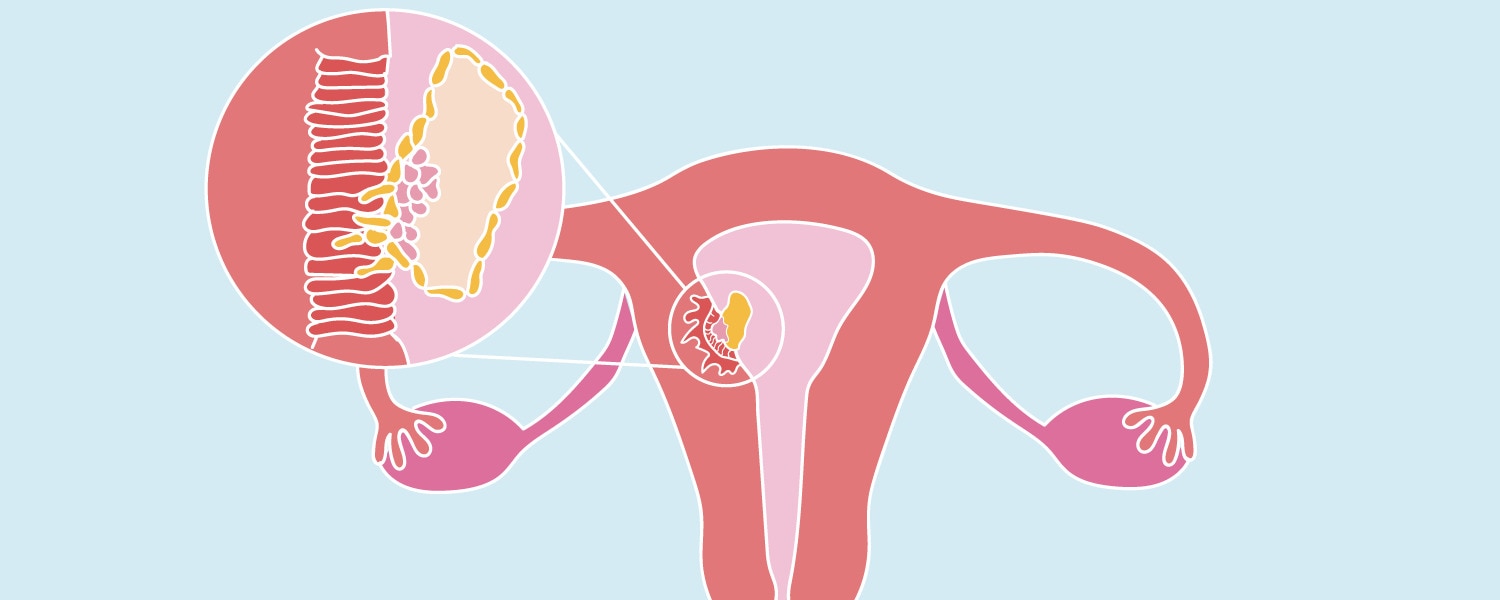What are implantation cramps and spotting?

Sometimes our periods are much shorter and lighter for no apparent reason! However, it could also be a sign of early pregnancy. So let’s find out how you can identify implantation bleeding from regular spotting.
If you’re experiencing cramps and some light bleeding, it’s easy to assume that it’s just your period making its monthly return. But this is not always the case and it could even be a sign that you’re expecting a baby! This is because one of the first stages of pregnancy is when implantation takes place, which is the process of a fertilised egg attaching itself to the uterus lining. [1]
Even though many people may not be aware of it, implantation can actually cause light spotting and some cramps. This is completely normal during early pregnancy, with 1 in 4 women reporting to experience these symptoms. [2]
Let’s take a further look at what implantation bleeding and cramps look and feel like, so that you can be prepared for whatever your body may be going through!
What is implantation spotting like?
Implantation usually happens around 6-12 days after you’ve had unprotected sex. It can sometimes cause the tiny blood vessels in the uterus wall to break down and this is what triggers implantation bleeding.
So even though this process still involves blood being shed through the vagina (like when you’re on your period), it is not caused by hormones like menstruation is. You may also notice:
- Lighter blood colour than your period; think rusty brown or even a light pink.
- Very light flow– this why it’s often referred to as “spotting”. With implantation spotting, however, you won’t nearly have enough blood to fill a pad or tampon – it tends to be only a few speckles of blood! But you could always try using a liner or period underwear to help you feel more comfortable.
- Shorter bleeding time. Implantation won’t last as long as your period – it’s likely to take from 2 hours to 3 days. [3]
In other words, if you are experiencing heavy, red coloured bleeding for more than 3 days, then it probably isn’t implantation spotting but just your usual period! However, if you want to be sure then you can always take a pregnancy test at home or with your doctor.
What do implantation cramps feel like?
It may be hard to tell the difference between implantation cramps and period cramps as they both involve feelings of spasms or a dull but constant throbbing around your lower tummy area. Yet, implantation cramps tend to be slightly milder and not last for as long.
Implantation cramps are also often described as more of a pulling or tingling feeling in comparison to menstrual cramps. In either case, remember that whenever you feel like cramps are becoming too uncomfortable or are stopping you from your usual activities, you can always take a painkiller to help relieve the pain.
Overall, implantation spotting or cramps are very rarely a cause for concern in the early stages of pregnancy. However, if you do experience bleeding later on then it could be an indication that something more serious is happening. If that’s the case, it’s a good idea to see your doctor straight away. But when it’s just a sign that you’re beginning your pregnancy journey, then it may be time for you to start preparing yourself for what is to come! So why not check out our pages on pregnancy and your period and how your body changes during pregnancy?
Medical disclaimer
The medical information in this article is provided as an information resource only, and is not to be used or relied on for any diagnostic or treatment purposes. Please consult your doctor for guidance about a specific medical condition.
[References]
[1] Hasan R, Baird DD, Herring AH, Olshan AF, Jonsson Funk ML, Hartmann KE. Patterns and predictors of vaginal bleeding in the first trimester of pregnancy. Ann Epidemiol. 2010;20(7):524-531. doi:10.1016/j.annepidem.2010.02.006
[2] https://www.ivi.uk/blog/what-is-implantation-bleeding/
[3] https://americanpregnancy.org/pregnancy-symptoms/what-is-implantation-bleeding-24176/
Continue learning



